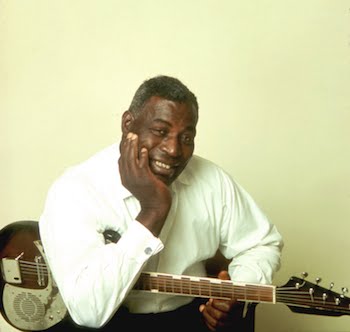Starting as folk music for the enslaved to cheer themselves on, Blues would emerge as a genre in the mid 1800s around the Mississippi Delta. Though, the music styling would begin its popularity around the early 1900s, Delta Blues being one of the earliest Blues stylings. Artist Howlin’ Wolf would redefine aspects of this early Blues, giving it that tangy Chicago spin that would go on to influence both Jimi Hendrix and the Rolling Stones.
Chester Arthur Burnett– stage name, Howlin’ Wolf– was born on June 10th, 1910 in White Station, Mississippi. His early life was rough, having two parents separate at a young age then forced to live with a harsh uncle up until age 13, where he would run away to live a life with his father’s family. Being a sharecropper Burnett’s father would encourage him to work on the farm. During these work days, it would grow inspired with various Blues artists who traversed the Mississippi Delta, most notably Charley Patton. Burnett would receive an electric guitar for his birthday of 1928, where he would then convince Patton to give him lessons.
The nickname “Howlin’ Wolf” would be given at nighttime juke joints, where he would go ham on the harmonica and electric guitar, often incorporating growls and howls into the mix, giving off a wild vibe.
His constant work in music would come to a halt in 1941 to 1944 where he was spent drafted in the military. After being discharged, he would form an electric band in 1948, West Memphis, Arkansas. He wouldn’t have his big first hit, though, until he secured a contract with Sam Phillips recording studio, who would form Sun Records. The release of his song, “How Many More Years,” would burst in popularity in 1951 after it reached Chess Records in Chicago, who would be sold and release the song.
“How Many More Years,” although Blues, is often regarded as the first Rock N’ Roll song due to utilizing the guitar lick that’s used in the genre today. The song itself touches on the tribulations of being pushed around in a relationship. The lines utilize 12-bar-blues, and the featured instruments are drums, electric guitar, sax, and most predominantly coming after his singing, Burnett’s harmonica. This track would reach up to #4 on the Billboard R&B charts.
In his later years, Burnett would move to Chicago where he would reside for the rest of his life. His music styling would combine further incorporate Chicago Blues, becoming more coordinated and his aggressive tones relaxing. His single, “Killing Floor,” is an excellent example of the newly adopted groove. Released in 1964, the song would be one that famous artist, Led Zeppelin would cover.


